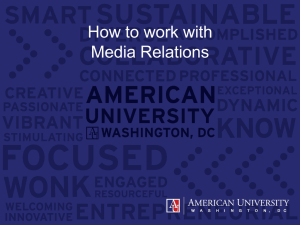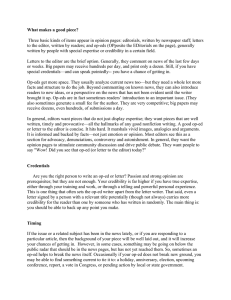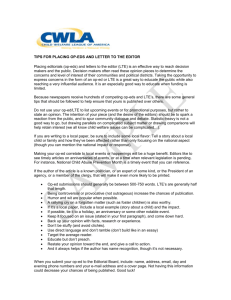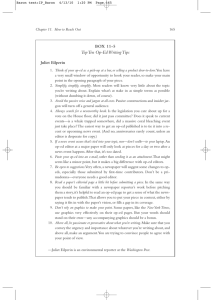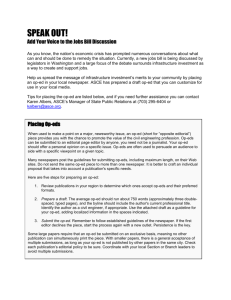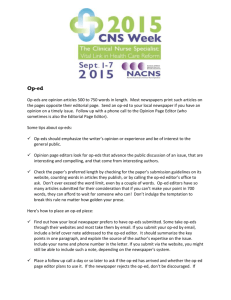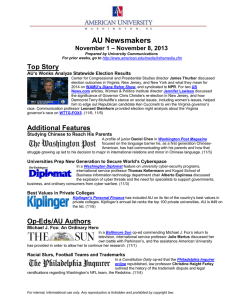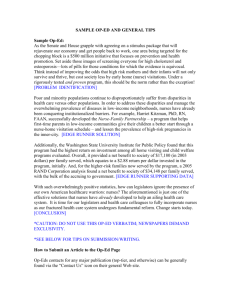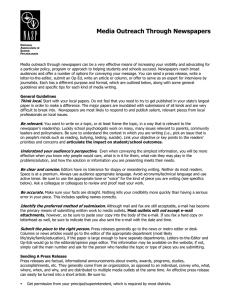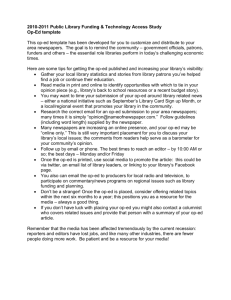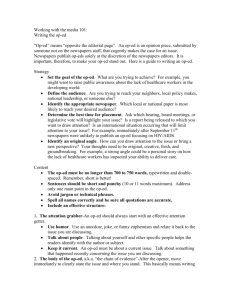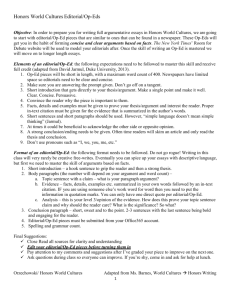How to write and place an op-ed
advertisement
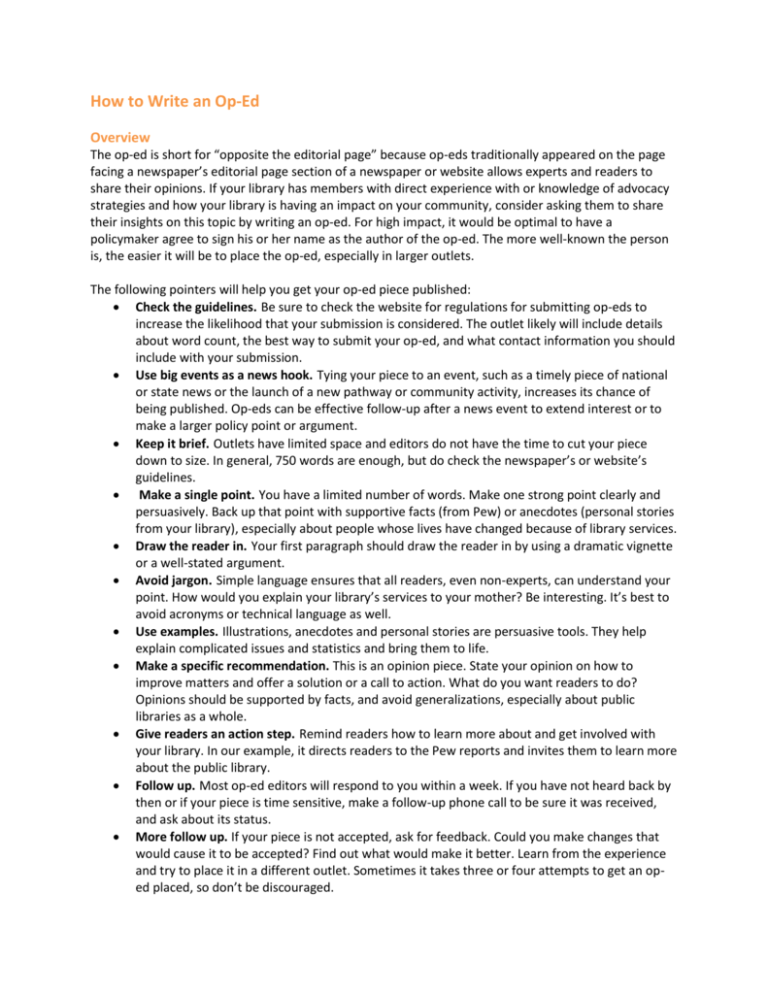
How to Write an Op-Ed Overview The op-ed is short for “opposite the editorial page” because op-eds traditionally appeared on the page facing a newspaper’s editorial page section of a newspaper or website allows experts and readers to share their opinions. If your library has members with direct experience with or knowledge of advocacy strategies and how your library is having an impact on your community, consider asking them to share their insights on this topic by writing an op-ed. For high impact, it would be optimal to have a policymaker agree to sign his or her name as the author of the op-ed. The more well-known the person is, the easier it will be to place the op-ed, especially in larger outlets. The following pointers will help you get your op-ed piece published: Check the guidelines. Be sure to check the website for regulations for submitting op-eds to increase the likelihood that your submission is considered. The outlet likely will include details about word count, the best way to submit your op-ed, and what contact information you should include with your submission. Use big events as a news hook. Tying your piece to an event, such as a timely piece of national or state news or the launch of a new pathway or community activity, increases its chance of being published. Op-eds can be effective follow-up after a news event to extend interest or to make a larger policy point or argument. Keep it brief. Outlets have limited space and editors do not have the time to cut your piece down to size. In general, 750 words are enough, but do check the newspaper’s or website’s guidelines. Make a single point. You have a limited number of words. Make one strong point clearly and persuasively. Back up that point with supportive facts (from Pew) or anecdotes (personal stories from your library), especially about people whose lives have changed because of library services. Draw the reader in. Your first paragraph should draw the reader in by using a dramatic vignette or a well-stated argument. Avoid jargon. Simple language ensures that all readers, even non-experts, can understand your point. How would you explain your library’s services to your mother? Be interesting. It’s best to avoid acronyms or technical language as well. Use examples. Illustrations, anecdotes and personal stories are persuasive tools. They help explain complicated issues and statistics and bring them to life. Make a specific recommendation. This is an opinion piece. State your opinion on how to improve matters and offer a solution or a call to action. What do you want readers to do? Opinions should be supported by facts, and avoid generalizations, especially about public libraries as a whole. Give readers an action step. Remind readers how to learn more about and get involved with your library. In our example, it directs readers to the Pew reports and invites them to learn more about the public library. Follow up. Most op-ed editors will respond to you within a week. If you have not heard back by then or if your piece is time sensitive, make a follow-up phone call to be sure it was received, and ask about its status. More follow up. If your piece is not accepted, ask for feedback. Could you make changes that would cause it to be accepted? Find out what would make it better. Learn from the experience and try to place it in a different outlet. Sometimes it takes three or four attempts to get an oped placed, so don’t be discouraged.
